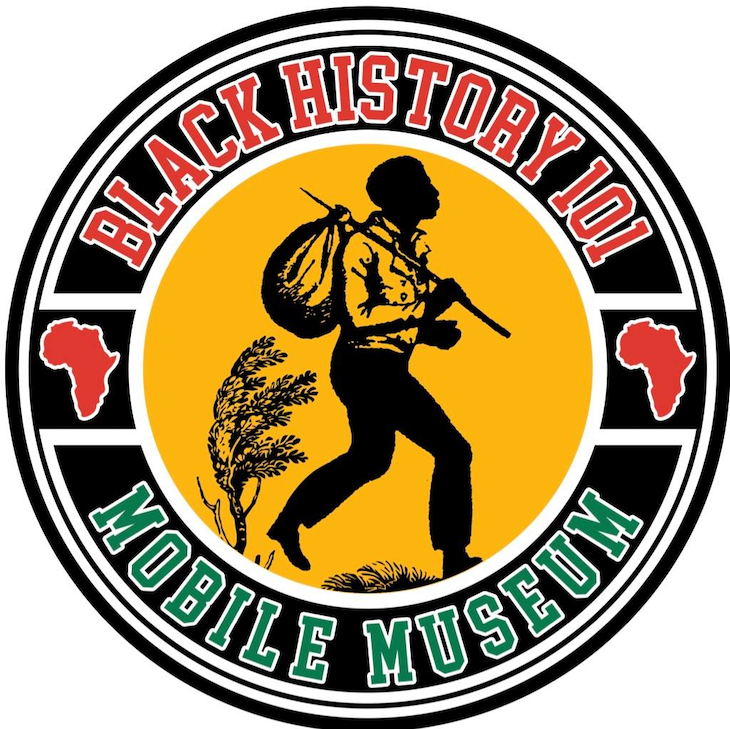
Black History 101 Museum takes hands-on approach to exploring Black experience
Wednesday, February 10, 2021
UPDATE: Due to extreme winter weather, this event has been rescheduled for 10 a.m. to 3 p.m. March 9 in the Leadership and Campus Life Lounge on the second floor of the student union
The founder and curator of the Black History 101 Mobile Museum is coming to OSU, and he’s bringing tangible history with him.
The traveling exhibit, which includes over 150 artifacts dating from the transatlantic slave trade to modern day, will be on display from 10 a.m. to 3 p.m. Feb. 17 in the Leadership and Campus Life Lounge on the second floor of the student union.
It’s been 30 years since Dr. Khalid el-Hakim started collecting artifacts detailing the Black experience in the United States. His museum collection now includes over 7,000 artifacts, but el-Hakim’s mission is rooted in the same idea that started it all in 1996: a hands-on approach to sharing and learning about Black history.

El-Hakim drew initial inspiration from Dr. David Pilgrim, a sociology professor at Ferris State University and founder of the Jim Crow Museum of Racist Memorabilia, who shared tangible artifacts of institutional racism to class to heighten students’ perspectives. In the 1990s, el-Hakim began collecting artifacts himself.
“Shortly after taking his class I started going to antique shops, used book stores, garage sales and flea markets and such, picking up Jim Crow related material," he said. "Then I made the conscious decision to collect things that represented the whole Black experience in America."
That meant adding hip hop culture to the exhibit, which he said was a major part of his own journey of historical discovery and the broader Black American experience.
“I learned a lot of Black history and culture from listening to hip hop during what they call the golden era of hip hop — the mid 80s up until the early 90s,” he said. “They were putting messages in music and having their fans go and inquire about the things they were talking about or situations grounded in history.
“That wasn't something that was being talked about necessarily in my K-12 experience and if it was it just wasn’t something that captured my attention, but hip hop as a culture captured my attention. It was youth culture, but it was also peers using the power of the word in music to teach messages.”
As a social studies teacher in the 1990s, el-Hakim used primary source material to engage his students. Then he expanded to doing presentations in churches, public libraries and culture events around Detroit.
“Once I started doing that and seeing how the public responded to the exhibits and how they recognized the need for stuff like this it kind of grew from there,” he said.
He eventually began receiving invites from college campuses. Since 2011, the exhibit has been his primary focus, taking him across the country and connecting him with teachers who he mentors on how to use artifacts in their own teaching.
Between the historical artifacts and modern perspectives, el-Hakim has created something he hopes will have a lasting impact and serve as inspiration for deeper learning.
“The name of the museum is very intentional — ‘Black History 101’ — because it’s an introduction to this history that has been marginalized, in some cases erased, in society. So the takeaway is to spark interest in students to want to go and do their own research on some of the things they’re being exposed to in the exhibit.”
El-Hakim said if students are on a college campus and don’t know the history of their fellow students or the history of their teachers and staff that’s a missed opportunity.
“Artifacts are indisputable evidence,” he said. “So when people see this material in the context of how it's curated in some of the most difficult parts of the exhibit people understand what it is when they see it.
“For example I have an original Ku Klux Klan hood that I take on the road with this exhibit, so that's kind of a hard thing to look at. It emotionally draws things out of people and helps them understand the reality that this is the type of situation that Martin Luther King was up against.”
Vice President for Institutional Diversity and Chief Diversity Officer Dr. Jason Kirksey credits African American Affairs coordinator Tika Johnson, the OSU Office of Multicultural Affairs, the student leaders from the African American Student Association, Student Union Activities Board and Dr. Erica Townsend-Bell, director of the OSU Center for Africana Studies, for their efforts to bring this unique and meaningful experience to OSU.
"We are excited about the opportunity to offer the Black History 101 Mobile Museum as one of the featured events for this year’s OSU Black History Month celebration," he said. "This mobile museum travels the country, so we are certainly honored to provide this wonderful educational experience to OSU students, staff and faculty, as well as community members."
MEDIA CONTACT: Mack Burke | Editorial Coordinator | 405.744.5540 | mack.burke_iv@okstate.edu
